Labortary Animal Behavior Analysis Platform
Comprehensive Introduction:
The Animal Behavior Analysis Platform of Institute of Laboratory Animal Sciences, Chinese Academy of Medical Sciences was established in 2009. The rodent facility on platform covers 268 square meters, and the non-human primate facility covers 179 square meters. Among them, the rodents were equipped with a complete barrier air conditioning system, and the behavioral experiments were carried out in the barrier system, which ensured the objectivity of the experimental results of animal behavior to the greatest extent.
Service and Technology Support:
The platform possesses the following behavioral science and related detection systems:
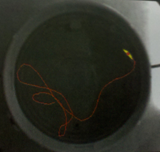 |
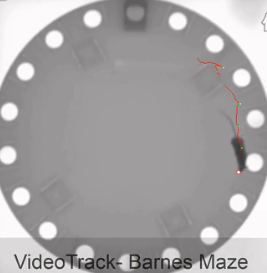 |
 |
|
Figure 1 Water maze experiment |
Figure 2 Barnes Maze experiment |
Figure 3 Y Maze |
 |
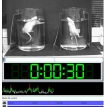 |
 |
| Figure 4 Elevated plus maze diagram |
Figure 5 Forced swimming picture |
Figure 6 New object recognition experimen |
 |
 |
| Figure 7 Social recognition experiment |
Figure 8 Social experiment |
2.Context /cued fear conditioning test system: used for detecting associative learning in small rodents (rats and mice), including environment-related and conditional-related fear experiment. Freezing time can be analyzed in sections by this system, and experimental videos can be saved (Figure 9-10).
 |
 |
|
Figure 9 Software operation interface |
Figure 10 Video playback interface |
3. Pre-pulse Inhibition (PPI) test system:
PPI is a normal phenomenon in the startle response in which slight stimulation 30 to 500 milliseconds before a sudden startle stimulus can lead to a reduction in the intensity of the startle response. It is used to measure sensorimotoric gating in animals. This system can be used for PPI functional detection (Figure 11).

Figure 11 Analysis interface of system hardware and data
4. Shuttle box system of Ugo Basile Company: this system can be used to detect both associative learning and memory and acquired helplessness model (Figure 12-13).
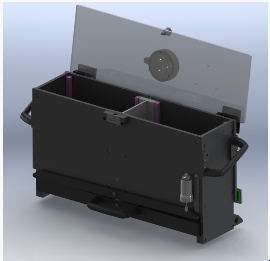 |
 |
|
Figure 12 Shuttle box hardwar |
Figure 13 Interface of shuttle box software |
5. Tail suspension experiment: this system adopts the principle of tension sensor, and can accurately collect the immobile time, struggle intensity and other indicators of mice, which can be used for the screening of antidepressant drugs and the study of the pathophysiological mechanism of depression (Figure 14-15).

Figure 14 Tail suspension boxes

Figure15 Software interface
6. Bioseb test system of grip strength meter : used to detect the gripping power of the forelimb or limb of rats and mice (Figure 16).

Figure 16 Grip strength meter
7. The balance beam test and drum test system and method can be used to detect the movement ability of rats and mice, especially the symmetrical movement of bilateral limbs.
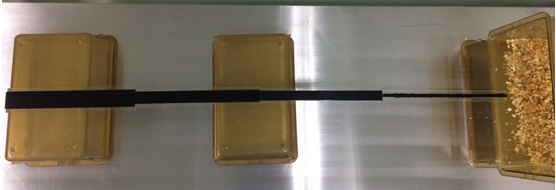
Figure 17 Balance beam test

Figure 18 Drum test
8. Detection system of in vitro nerve electrophysiology is used to detect the function of neurons, synapses or nerve microcircuits of isolated brain slices in rodents.

Figure 19 Detection system of in vitro nerve electrophysiology
9. Acquisition system of in vivo nerve electrophysiology. Neural signal acquisition system (amplifier, preamplifier, etc.), microelectrode array and related application software are included. It is used to record and analyze the electrical activities of primates and rodents in different brain regions, neural network and and peripheral. Through the operation, the microelectrode array will be embedded in specific brain regions of animals, combining with animal behavior experiment and light genetics experiment, which can realize the brain neural signals real-time capture, online and offline classification of neurons, action potential (Spike) and field potential (LFP) related to the experiments, and other physiological signal analysis, etc.

Figure 20 Multi-channel acquisition system of nerve electrophysiology in vivo
10. The injection system of stereotaxic localization of brain includes brain stereotaxic apparatus, respiratory anesthesia machine, etc., which can be used for injection of brain localization in rodents.
11. The brain microdialysis system includes a four-channel microdialysis injection pump, an in vitro fixation bracket assembly (including a probe clip), a double-channel stainless steel rotary ring, and a awake animal movement device, etc. It is used to collect the local chemical content in different brain areas of the central nervous system of rodents.

Figure 21 four-channel micro-injection pump
12. Spontaneous activity detection system of non-human primate: the hardware of the system includes infrared background wall, animal cage, and infrared cameras installed on the side and top of the cage. The system software is used to detect spontaneous primate activity and can simultaneously analyze four animal cages. The detection results include motion trajectory, motion speed, motion distance, motion time, conversion times between high speed and low speed motion, and activity, etc. (Figure 22-23).
 |
 |
|
Figure 22 system hardware |
Figure 23 system software |
13. Cognitive function detection system of non-human primate: this system is the latest primate CANTAB cognitive test system developed by Lafayette in the United States. Its application contains a series of test execution functions, which can be operated directly from the touch screen and can be set up flexibly. The system provides module functions of food reward and liquid reward software (Figure 24).

Figure 24 Primate CANTAB cognitive testing system
The behavioral analysis platform can undertake the task of animal behavioral evaluation, and conduct the pharmacodynamics research of neuropsychiatric diseases such as Alzheimer's disease, Parkinson's disease and depression, as well as the behavioral evaluation of transgenic and gene knockout animal models and behavioral research of new animal resources.
At present, the behavioral analysis platform cooperates with the Neurodegenerative Disease Research Center of CNRS Research Institute in Bordeaux, France. Based on the frontiers of science, the platform applies mice and primates to carry out research on neurodegenerative diseases such as Parkinson's disease, Huntington's disease and Alzheimer's disease.
Contact information:
Contact: Sun Xiuping
Address: No. 2 Nanwei Road, Xicheng District, Beijing
Contact number: 010-63013095, dial 0
E-mail: sunxp@cnilas.org

 WeChat
WeChat